I have read the following but please take a look at my code below.
Why Dijkstra's Algorithm uses heap (priority queue)?
I have two versions of dijkstra, one good version with PQueue, and one bad version with regular linked list queue.
public static void computeDijkstra(Vertex source) {
source.minDistance = 0.;
Queue<Vertex> vertexQueue = new PriorityQueue<Vertex>();
// Queue<Vertex> vertexQueue = new LinkedList<Vertex>();
vertexQueue.add(source);
while (!vertexQueue.isEmpty()) {
Vertex fromVertex = vertexQueue.poll();
if (fromVertex.neighbors != null) {
for (Edge currentEdge : fromVertex.neighbors) {
Vertex toVertex = currentEdge.target;
if (currentEdge.weight + fromVertex.minDistance < toVertex.minDistance) {
toVertex.minDistance = currentEdge.weight + fromVertex.minDistance;
toVertex.previous = fromVertex;
vertexQueue.add(toVertex);
}
}
}
}
}
public static void computeDijkstraBad(Vertex source) {
source.minDistance = 0.;
// Queue<Vertex> vertexQueue = new PriorityQueue<Vertex>();
Queue<Vertex> vertexQueue = new LinkedList<Vertex>();
vertexQueue.add(source);
while (!vertexQueue.isEmpty()) {
Vertex fromVertex = vertexQueue.poll();
if (fromVertex.neighbors != null) {
for (Edge currentEdge : fromVertex.neighbors) {
Vertex toVertex = currentEdge.target;
if (currentEdge.weight + fromVertex.minDistance < toVertex.minDistance) {
toVertex.minDistance = currentEdge.weight + fromVertex.minDistance;
toVertex.previous = fromVertex;
vertexQueue.add(toVertex);
}
}
}
}
}
I also have graph creation with a text file like below
0, 1, 2, 3, 4, 5, 6 // vertices
0, 6 // from and to vertex
1, (2-5, 0-4, 4-6) // from vertex 1 it will have edge to 2 with weight 5 ...
0, (4-3, 3-7)
4, (2-11, 3-8)
3, (2-2, 5-5)
2, (6-2, 5-10)
5, (6-3)
Both the implementation renders the following [0, 3, 2, 6] which is the shortest path indeed from 0 to 6!
Now we know, if a Simple BFS is used to find shortest distance with positive integers, there will be cases where it will not find the minimum path. So, can someone give me a counter example for which my Bad implementation will fail to print the right path for a graph. Feel free to give me the answer in the graph format (the sample text file format) that I used.
So far all the graphs I have had, both implementations rendered the right result. This shouldn't happen because the bad implementation is runtime (E+V) and we know we can't find shortest path without at least E log V.
Another example,
0, 1, 2, 3, 4, 5, 6, 7, 8, 9, 10
0, 10
0, (1-9, 2-10, 3-11)
1, (4-1, 5-7)
2, (4-4, 5-3, 6-5)
3, (5-1, 6-4)
4, (7-9, 8-14, 5-3)
5, (7-4, 8-5, 9-9, 6-2)
6, (8-2, 9-2)
7, (10-3)
8, (10-2)
9, (10-5)
Both implementations renders [0, 3, 5, 6, 8, 10], which is the correct shortest path from 0-10.
